In previous articles, I have already considered the question of for my country house and how. The availability of water at least within walking distance and the choice of a method for disposing of waste (including human life) are tasks that sometimes require complex engineering solutions. And the first stage in meeting these needs, as in any construction activity, is design. That is, compiling design scheme, taking into account not only the requirements of users, but also sanitary norms and rules.
About country "amenities"
Dacha ... For someone it is luxurious, full of wonderful, twined or. Another cannot imagine a dacha without, in which the harvest is ripening, and enough to eat plenty in the season and make it for the winter, and even enough for relatives and friends. The third believes that today any all year round you can buy in a supermarket, but - yes, this is something without which country rest- not rest.But no matter how the owners of a country house formulate their preferences, there is one thing that unites both an avid florist and a lover of a bathhouse and barbecue. Something that is sure to be on any site, even the smallest one. It . With the erection of this structure, the development of the site and the construction of the house begin.
Depending on the conditions and financial possibilities in country estates are different. Actually, the differences lie in the method of utilization of natural products of human life. The diagram shows general classification outhouses.
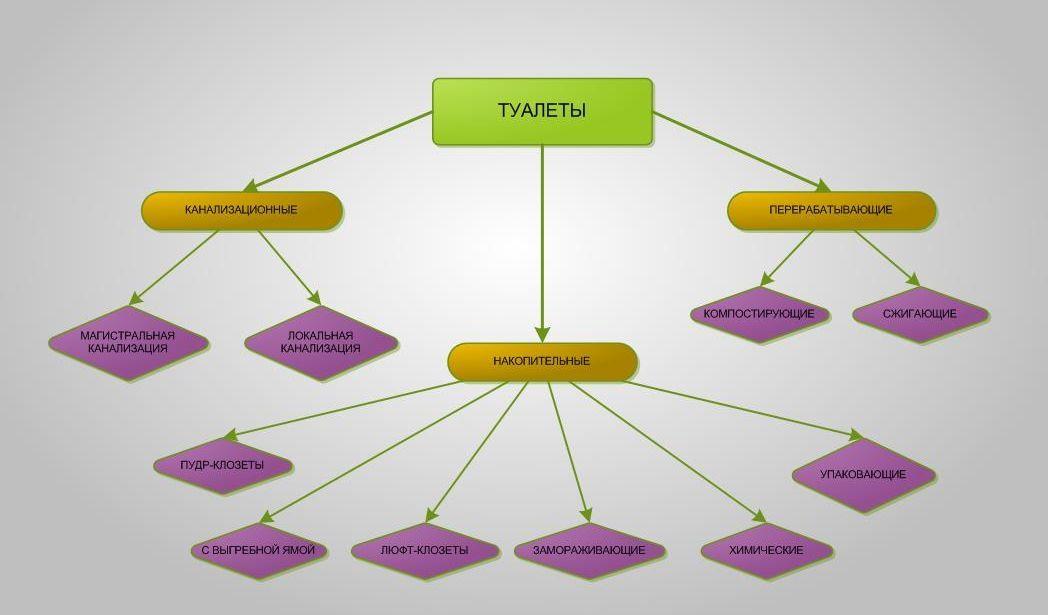
Strictly speaking, all the toilets listed in the scheme are recycling: organic waste is converted into a set of chemical elements and simple compounds suitable for plant nutrition. This process is called biological cycle substances in nature. He constantly walks around us - in the soil, reservoirs, in the compost heap, finally.
The only difference is that in the very design of storage toilets and those connected to the main sewer, the recycling process does not take place - the waste is transported in one way or another to the final processing site. In really processing devices and local sewerage decomposition to a safe or useful state occurs directly in the system itself. Consider in more detail each type of toilet.
- Toilet with connection to the main sewer
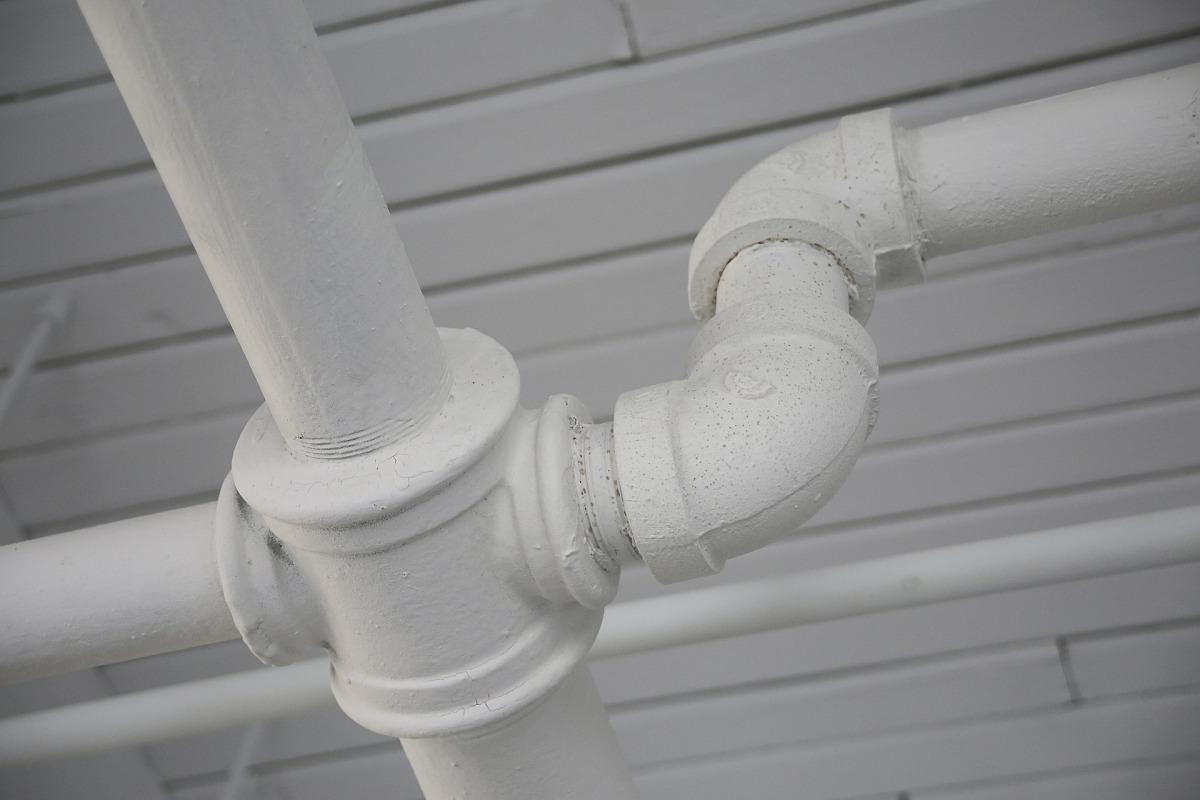
- Toilets connected to local sewerage
- cesspool toilets
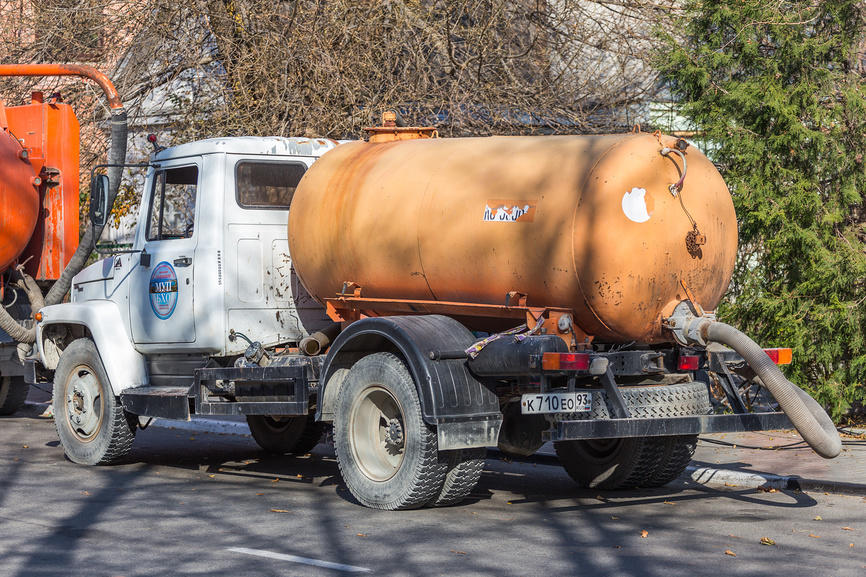
- play closet
- Powder closets and peat toilets
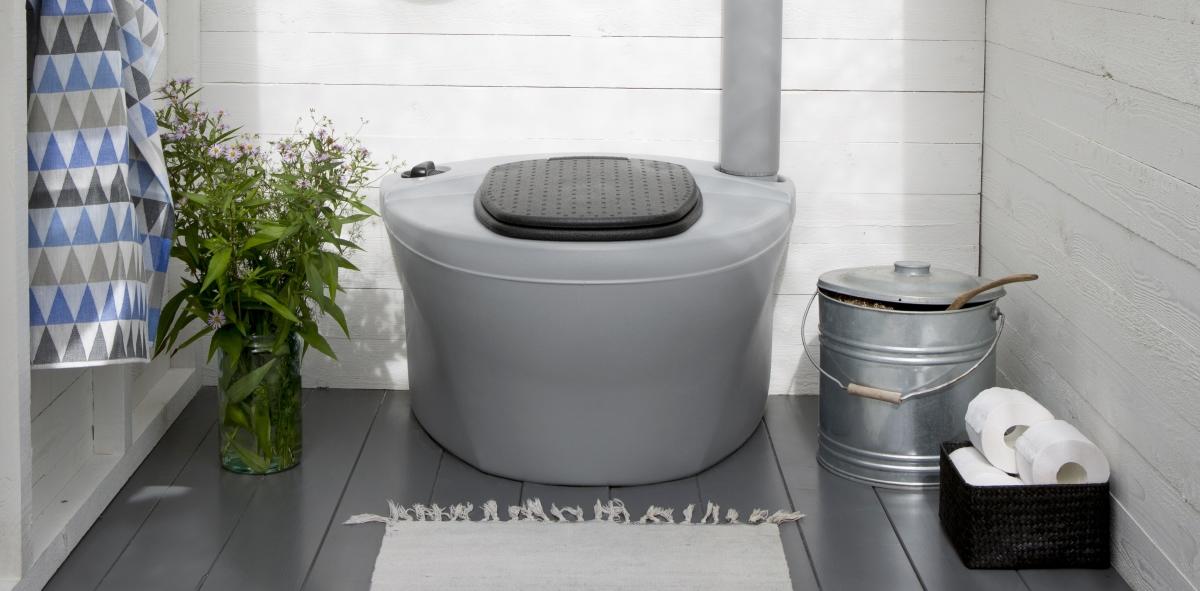
- Composting or recycling toilets
- Chemical toilets
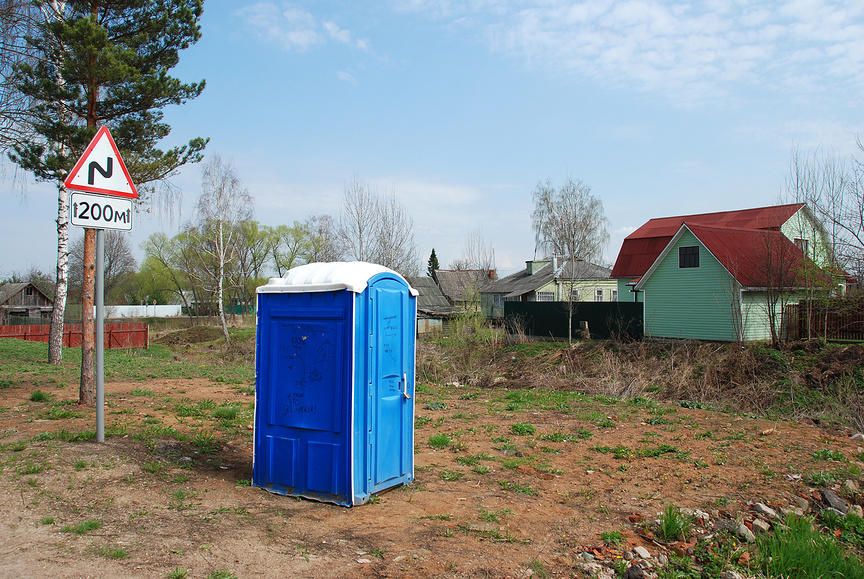
- Toilets burning, freezing and packing sewage
Frozen waste remains frozen only as long as the device is connected to the network. In the event of power outages - well, you understand, your refrigerator was defrosting when the light was suddenly turned off. Therefore, such latrine designs are more suitable as a mobile option.
What will be the toilet, of course, depends on the owner. But when choosing, you should focus not only on your desires and capabilities, but also on the requirements of regulatory documents. There is general rules and private recommendations depending on the wastewater treatment system. Also, one should not forget about the so-called "gray" drains: from showers, sinks, washing and dishwashers. If sewerage is available (main or local), "gray" drains are combined with "black"- from the toilet. If non-sewer toilets are used, gray wastewater must also be properly disposed of.
How Ivan Ivanovich quarreled with Ivan Nikiforovich...
Building a toilet in a densely populated area can be a real headache for the owner and cause quarrels with neighbors. When drawing up a site plan, you need to start not with a decision where there will be beds with cabbage or a flower bed, not with choosing a place for a recreation area, but with where you will place a yard toilet, septic tank or VOC. Because there are quite strict requirements for sanitary standards for the installation of a toilet, as well as places for storing household waste and compost heap.The task of choosing a location becomes more difficult for those who have a plot of land that is not too large, but who are surrounded by neighbors with the same small plots of land. After all, observing the distance prescribed by regulatory documents from the toilet to a water source or residential buildings is required not only on your site: it is not worth it if the neighbor's well is in close proximity to your toilet.

Failure to comply with sanitary standards may result in a fine and an order to correct the violations. How to place the toilet in such a way that you don’t offend yourself, and don’t quarrel with your neighbors, and keep the law? First you need to study these very rules and requirements.
Regulatory documents, or how not to bring things to a zugunder
Well, of course, violators of sanitary standards are not threatened with imprisonment, but an administrative penalty for improperly installing a toilet in the area in the form of a fine is quite possible. And ignorance of the law is no excuse.Code of the Russian Federation on Administrative Offenses
Code of Administrative Offenses of the Russian Federation No. 153-FZ was adopted on December 30, 2001. In the context of installing a toilet in a country house, article 8.6 of the Code of Administrative Offenses of the Russian Federation “Damage of lands” is interesting in the text of this document. Paragraph 2 of this article says that "... damage to land as a result of violation of the rules for handling ... hazardous to human health and environment substances and waste products of production and consumption... entails the imposition of an administrative fine on citizens in the amount of three thousand to five thousand rubles.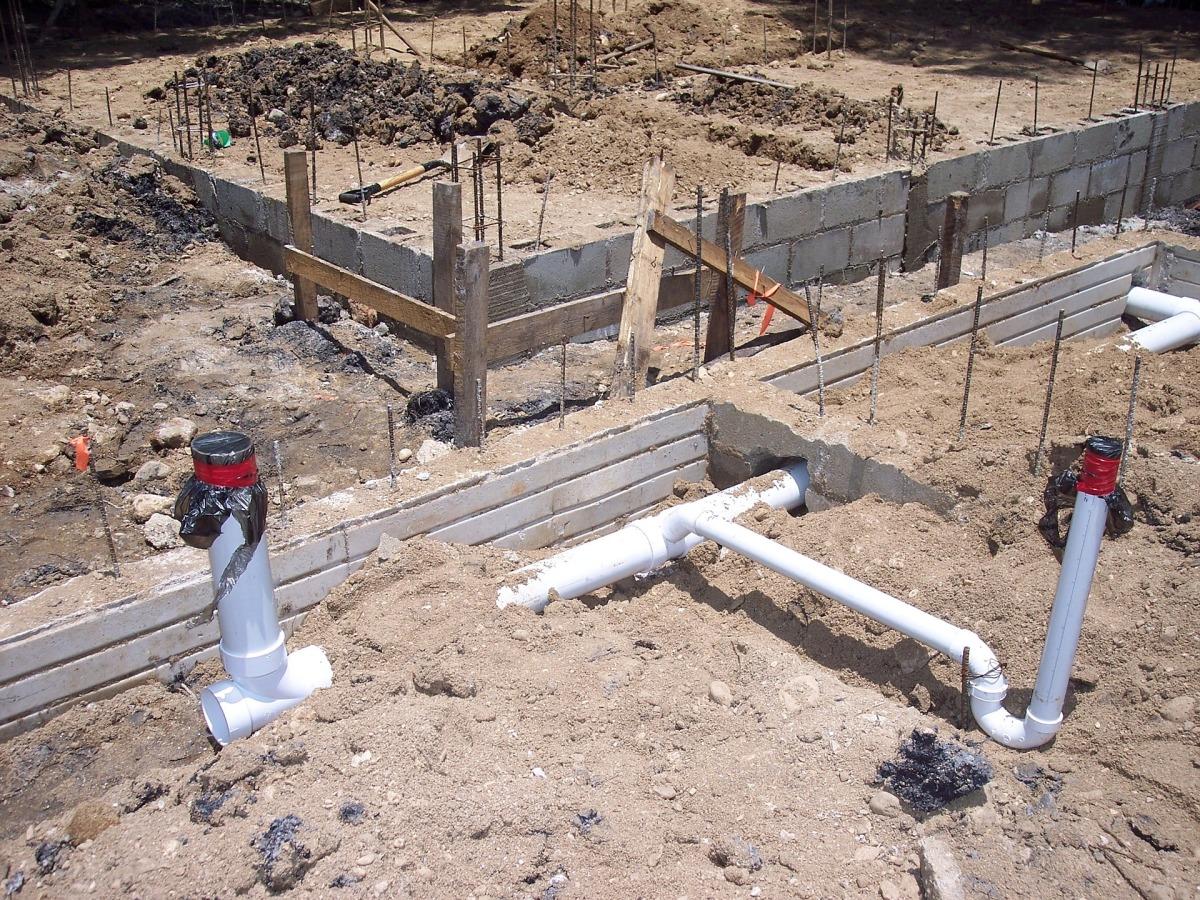
If the toilet on the site is not arranged correctly, the owner can be held administratively liable for damage to the land: if the cesspool is not airtight. For example, when a well without a bottom is used as a pit, or if the quality of cleaning Wastewater does not meet the standards. Consider excerpts from some documents - construction and sanitary norms and rules.
SNiP 30-02-97 Planning and development of territories of horticultural associations of citizens, buildings and structures
This document regulates the type of toilet for non-sewered collection of faeces. It is allowed to install composting toilets, dry closets (in which the decomposition of organic waste, with the use of "chemistry" not based on formalin). You can also arrange a backlash-closet and an outdoor restroom. For the construction of toilets cesspool type coordination with local SES authorities and with institutions involved in the regulation of the processes of protection and use is necessary groundwater. If you are equipping a site in a developed horticulture, contact the administration: they may already have agreed toilet designs.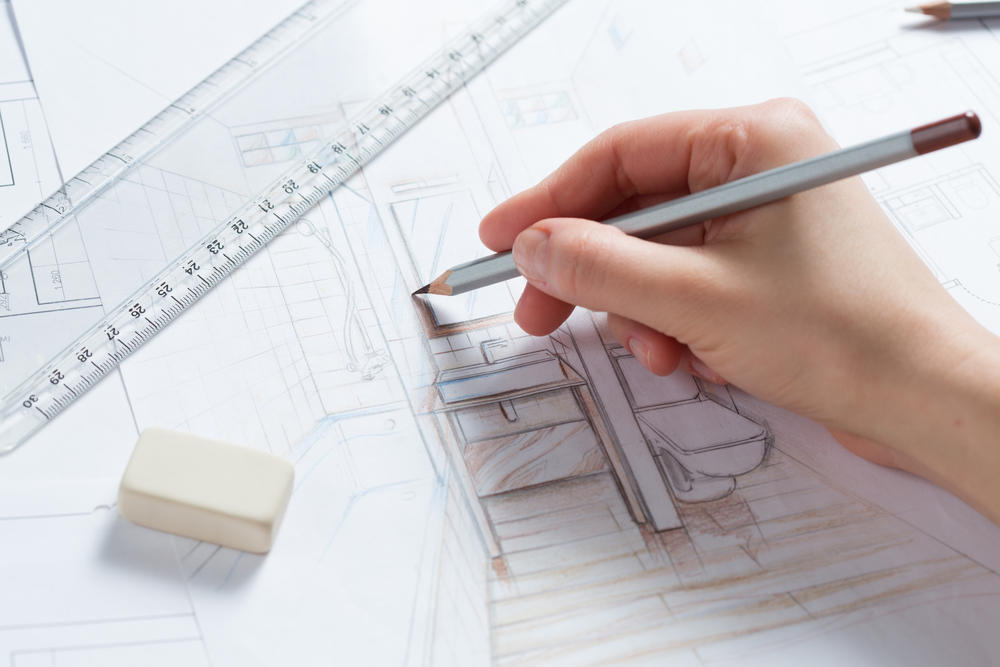
The use of backlash closets and latrines is not allowed in the IV and III (B subdistrict) climatic zones. For those who are not familiar with building climatology, I will explain that these zones cover the south of Russia and the southern republics former USSR: the average monthly temperature in these territories in January is from -2°С to +5°С, the average temperature in July is from +25°С.
The distance from the outhouse cesspool type to the main structures on the site is also regulated by SNiP. So, the toilet should be at least 12 meters from the apartment building, or. And 8 meters from the source drinking water. In addition to the toilet, the same distances must be observed for the place of storage of household waste and facilities for.
![]()
Do not forget that the specified sanitary zone applies not only to your house, cellar, well and playground: there should be at least 12 meters from the latrine or compost heap to your neighbors' houses, to their cellars and playgrounds. And 8 meters to neighboring sources of drinking water.
If you chose construction as the design of the toilet, then the sanitary standards for its placement are different.
Household effluents (from baths, showers, sinks, etc.) may be discharged into a filter ditch with backfill sand and gravel mix. It is possible to divert "gray" drains into a ditch passing along the outer perimeter of the site.
SanPiN 42-128-4690-88 Sanitary rules for the maintenance of populated areas
SanPiN 42-128-4690-88 describes in more detail the design of a cesspool toilet and the requirements for the conditions for its maintenance. So, for example, from this collection of rules you can find out that cesspool must be airtight, its depth cannot exceed 3 meters, and the bottom must be located above the level ground water. The pit can be made of concrete rings, bricks or blocks.Cesspool well necessarily must have a bottom, and the walls and the junction of the bottom should be waterproofed, for example, by plastering cement-sand plaster with finish ironing of the surface. If the groundwater level is high, then the outer surface of the sewage collection bin is additionally waterproofed. As a cesspool, you can use airtight plastic or metal containers.
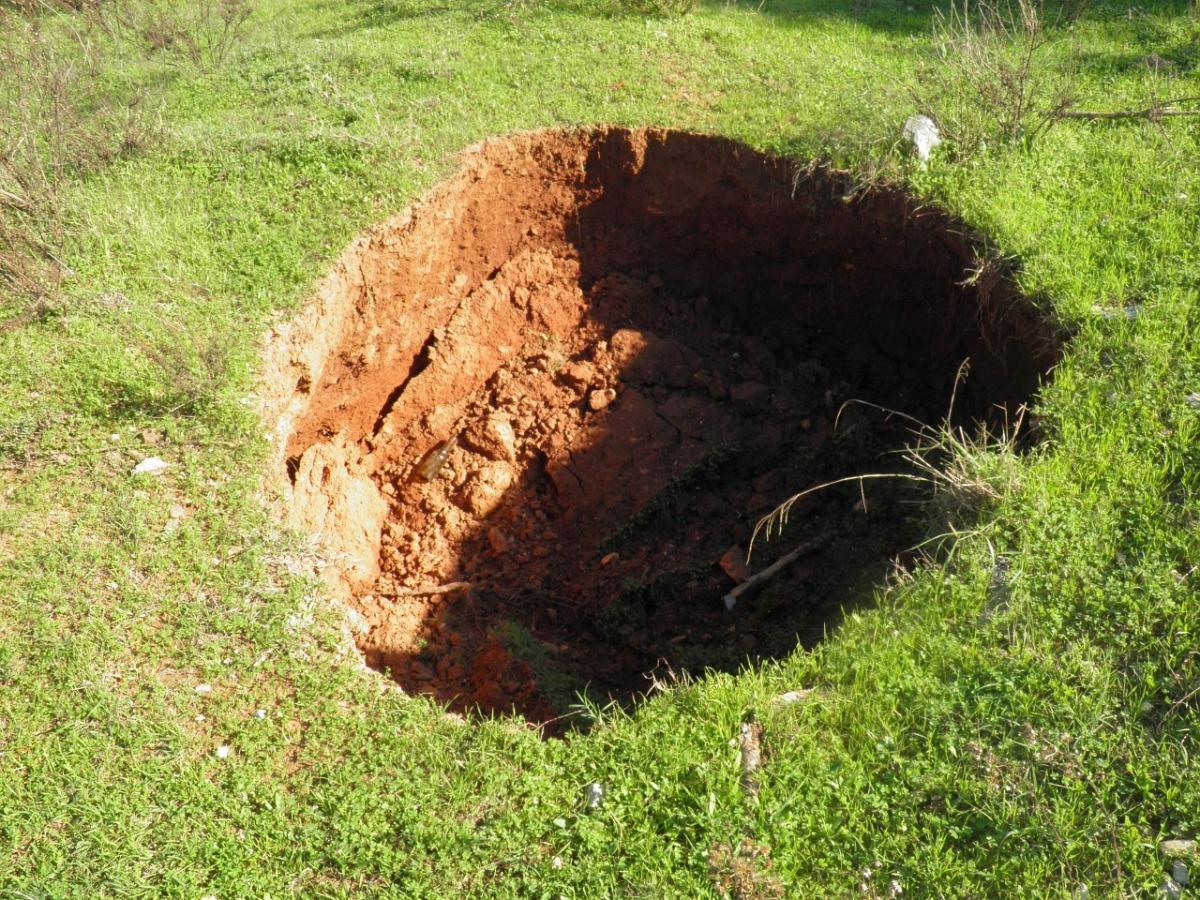
The volume of the pit is calculated taking into account the number of users. In any case, the volume should be such that when cleaning the pit at least once every half a year, the filling of the pit should not be higher than 350 mm from the ground. The structure of the toilet itself can be made of bricks, blocks or wooden planks fitted tightly, without gaps, to provide protection against the entry of insects and rodents.
In the toilet room, it is necessary to carry out regular cleaning using disinfectants such as 10% bleach, 3-5% sodium hypochlorite and others.
SanPiN 2.1.2.1002-00. Sanitary requirements for the design, reconstruction, construction and maintenance of operated residential buildings and premises for permanent residence
If above there was a conversation about dachas (small country houses for seasonal residence), then SANPIN 2.1.2.1002-00 establishes sanitary standards for houses permanent residence. According to the drafters of the document, residential buildings must be equipped sewerage. If it is not possible to connect to a mains or local network, in houses on the 1st or 2nd floors, you can use warm latrines of the backlash-closet type. Annex 1 to this document contains the recommended temperature for interior toilets +18...+21°С.As for country houses, there are also restrictions imposed by building climatology: such latrines can only be used in more northern areas.
SNiP 2.04.03-85. Sewerage. Outdoor networks and facilities
This normative document contains design codes for the device sewer networks houses. More precisely, groups of houses, because the requirements and norms are designed for quite large volume drains. Therefore, for individual private construction is not of great interest.Although the necessary information is still there. For example, about sanitary zone from the filtration field of the local treatment plant and the treatment plant structures themselves. AT low-rise construction, when installing local treatment facilities (septic tanks or aeration plants), the following sanitary protection zones should be taken:
- from filtering trenches - 25 meters;
- from filtering wells - 8 meters;
- from filtration fields up to 15 cubic meters per day - 15 meters;
- from septic tanks - 5 meters;
- from aeration treatment plants with a capacity of up to 700 cubic meters per day - 50 meters.
Manual for the design of autonomous engineering systems of single-apartment and block-housed residential buildings
You should start with the fact that the decision to choose the type of autonomous and the project should be coordinated with the authorities of the local State Sanitary and Epidemiological Supervision, and in the case of discharge of wastewater after treatment into a reservoir, with the environmental organization. When designing a local sewerage system, it is necessary to completely exclude the possibility of contamination of aquifers of the soil with sewage, that is, the tanks of sedimentation tanks, storage tanks, and pipelines must be airtight.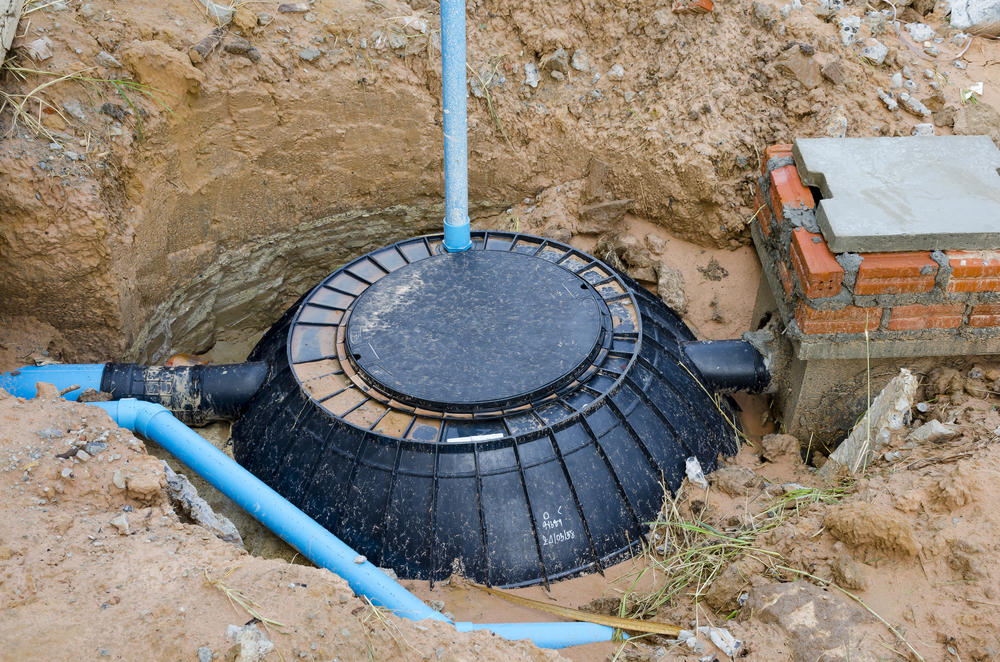
For the construction of a septic tank or sewage storage tank, reinforced concrete rings or masonry made of bricks or blocks can be used. Only all these structures must have internal waterproofing, providing seepage of liquid no more than 3 liters per cubic meter of sewage per day. If the groundwater level is high, the tank must also be insulated from the outside.
How to determine the required drive size
One of the important issues when arranging a local sewage system is the choice of the size of the storage tank or sump. Its capacity is calculated depending on the amount of wastewater. The storage tank must contain at least two weeks of wastewater and be no less than the capacity of the sewage truck. For those who do not know: the capacity of modern machines is 8 cubic meters, and a two-week average water consumption (and, accordingly, water disposal) of families from three people in a house with running water, but without a bath - about 6.3 cubic meters. Water consumption is accepted within the range of 120-150 liters per day per person. In the case of a bathtub, multi-point water intake and flow gas heaters- 10.5 cubic meters with an estimated amount of water consumed per person per day of 250 liters.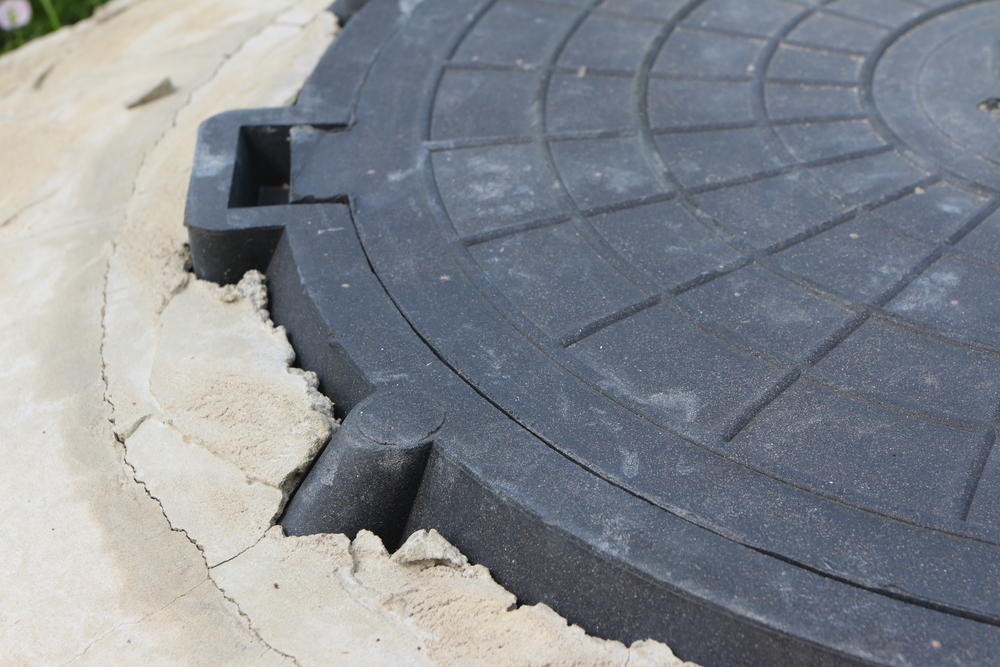
It is advisable to have septic tanks with subsequent post-treatment of wastewater in soil filtration fields, filtering wells or trenches with a volume of 2.5-3 times the daily water flow. That is, for the same three people living in a house with a conventional water supply system (sink, kitchen sink, shower and toilet) - 1.3 cubic meters; for plumbing with multiple taps, bathtubs and instantaneous water heaters- 2.3 cubic meters. Therefore, when buying or building a septic tank, do not try to save a lot and choose more cheap option by reducing storage capacity. Do not forget that septic tanks-settlers are subject to cleaning from accumulated sludge at least once a year. If you are ready to call an ilosos every six months, you can reduce the volume of the septic tank by 20 percent.
Both the Manual of the Ministry of Construction and manufacturers of septic tanks recommend using local treatment facilities to treat "gray" drains, and treating drains from the toilet separately - with composting toilets, dry closets, backlash closets.
,
Russian garden associations are very often "decorated" with numerous latrines. Few people think that the arrangement of an ordinary cesspool on land plot may lead to administrative liability.
According to paragraph 8.7 of the Russian building codes and rules SNiP 30-02-97, in the absence central sewerage you need to use powder closets and dry closets. But the construction and application cesspool devices(backlash closets and outdoor latrines) must be agreed upon at the design stage in local authorities for the regulation, use and protection of groundwater and in the institution of the sanitary and epidemiological service (SES). Household water (shower, bath) can be collected in a filter trench with gravel-sand backfill or, upon agreement with the SES, into an external ditch along a specially organized ditch (the same SNiP, paragraph 8.8).
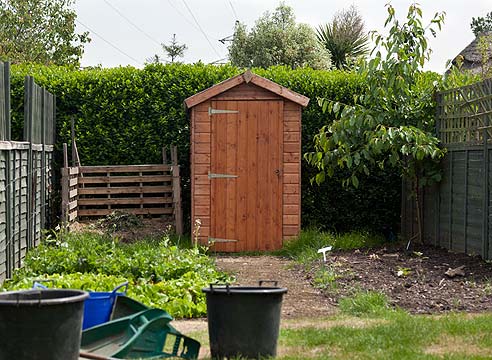
The rules are the same, but each region has its own system for monitoring their implementation, so the approval procedure has to be clarified on the spot. Building a "toilet-birdhouse" on their site, few people burdened themselves with such troubles. And many people are unaware of the existence of rules and regulations. And almost everywhere a cesspool is a filtering well that replenishes groundwater with its contents. It can be objected that in the villages such latrines have been standing for decades and no one makes any claims against them, that such pits are far from the aquifer, and during seasonal use they do not even have time to fill up. But times are changing. Out-of-town settlements are growing, and with them the requirements for compliance with environmental standards and regulations. It is impossible to dump human waste into the ground.
Terms from SNiP 30-02-97 "Planning and development of territories of horticultural associations of citizens, buildings and structures" taking into account changes in 2001.
dry closet- a device for processing fecal waste into organic fertilizer by using a biological oxidation process activated by electrical heating or chemical additives.
play closet- an intra-house warm restroom with an underground cesspool, into which feces enter through a sewer (fan) pipe. Ventilation is carried out through a special backlash channel adjacent to the heating devices, and the cesspool is located outside.
outhouse- light building, placed above the cesspool.
Powder closet- a toilet in which faecal waste is treated with a powdered composition, usually peat, and kept dry in an insulated container (tarred box with a lid) until compost is formed.
Forewarned is forearmed
What can threaten the old methods of waste disposal? According to the second part of article 8.6 of the Code of Administrative Offenses, the discharge of waste and utility water can be regarded as damage to land. And this entails an administrative fine in the amount of 1.5 to 2,000 rubles (relevance - January 2011).
For the first time, the inspector can get by with a warning (such violations are too widespread among us), but fines cannot be avoided on subsequent visits. And they will increase if the toilet is located close to a reservoir or a well (by the way, the restroom should be 12 m away from a residential building, and 8 m away from a well).
How to dispose of waste legally? There are three options: sealed storage capacity made of plastic or metal, emptied by a sewage truck, septic tank or local treatment plant (VOC). In the latter case, bureaucratic attention cannot be dispensed with - permission for installation and registration must be obtained from the SES, and each region has its own procedure for registration. So, until the inspector comes to check on you, think about what can be done so that the cesspool does not become a "cesspool". Try to start by contacting the chairman of the horticultural association. Maybe in founding documents there is already an agreement with the sanitary services for the arrangement of toilets for the entire village.
10 best articles on the topic: Country toilets: installation rules
country toilets: installation rules at Supersadovnik.ru
country toilets : installation rules. Text: Anastasia Anisimova. Toilet paper. Russian garden partnerships are very often "decorated" ...
toilets and souls on dacha site - Kniga.com
Choosing a place for country toilet rules country toilet: install powder closet with…
Introduction - ?Toilet - ?Types of toilets - ? Choosing the right option
Sanitary standards for installation closet in the village
31 Oct 2011 … How to correctly sanitary standards, install wood toilet on a plot in the village. On the dacha I found the norms in areas, but ...
country toilets: installation rules
country toilets: installation rules Russian garden associations are very often "decorated" with numerous latrines. Not many people who …
Blueprints country toilet and instructions for installation
If you have drawings country toilet, positive attitude... dacha toilet hygiene must be observed regulations and norms.
Rules the buildings country toilet— 1landscapedesign.ru
Installation frame; Installation of walls, doors and roofs; Arrangement of internal "amenities" of the street toilet. Considering that not all summer cottages …
Toilet at the cottage, construction toilet at the cottage with their own hands …
1 Aug 2011 … With incorrect installation toilet or septic tank for a summer residence, you can ... what installation corresponded rules, which are fixed in ... a country well, then construction country toilet normal type...
Wood toilet at the dacha - TverEkoStroy LLC
Should not be neglected rules devices country toilet. ... to use and you can proceed to installation top part dacha toilet.
Toilet for a summer residence, rural toilet. Tips, ideas. — TOILET. RU
Sanitary standards and regulations regulating design, construction, ... How to choose a toilet for a summer residence ( country toilet)? … backlash closets, powder closets and install reliable dry toilet on site.
Demin Sergey Vitalievich toilets and souls on dacha site
Choosing a place for country toilet requires some rules. …two organization possibilities country toilet: install powder closet with…
Rules for placing a toilet in a summer cottage
Toilet on suburban area or on a land plot in a private residential sector, cannot be done close to the water intake. From a conventional well, the distance should be 50 m, and from a well with casing pipes 30 m. If your site is located in the water protection zone of reservoirs and rivers, then there this distance increases to 200 m. In fact, residential buildings have an even greater restriction on the location of toilets. According to sanpin 42-128-4690-88 " Sanitary regulations maintenance of the territories of populated areas, yard latrines should be removed from residential buildings, all kinds of children's institutions, such as schools, kindergartens and even playgrounds.
The minimum distance is 20 m, but the distance to the toilets, even if these are yard latrines, from children's institutions should be no more than 100 m. But there are some indulgences, for private housing construction, the distance to the restroom is determined by the homeowners themselves and it is allowed to reduce this distance to 8-10 m. Just do not forget about the neighbors. They may not agree that the distance from your restroom to their house should be less than 30 m. In this case, a commission of local councils will deal with the conflict. How you can agree is a separate issue, but judicial practice shows that the court may well take your side, but, all the same, the minimum distance to the neighbor's house should not be less than 8 m, which, it should be noted, is not so small , if the neighbor's house was also built in compliance with building codes and regulations, it cannot be located closer than 3 m from the border of the plots, that is, closer than 5 m from the fence for your toilet is a restricted area.
Other important restrictions. The depth of the cesspool depends on the level of groundwater, but in any case, it should not be more than 3 m. If we remember, then in the village, when filling the pit, they simply dug a new one. It is clear that no one has concreted such pits. Today, the cesspool must be waterproof, but the rules do not even provide for pits. True, the method by which water resistance is achieved is not specified, therefore, it can be a metal caisson, and concrete rings, and so on. You simply won’t endure such a hole, therefore, in without fail a pit with a lid is provided. That is, it is assumed that the pit will be cleaned regularly.


















